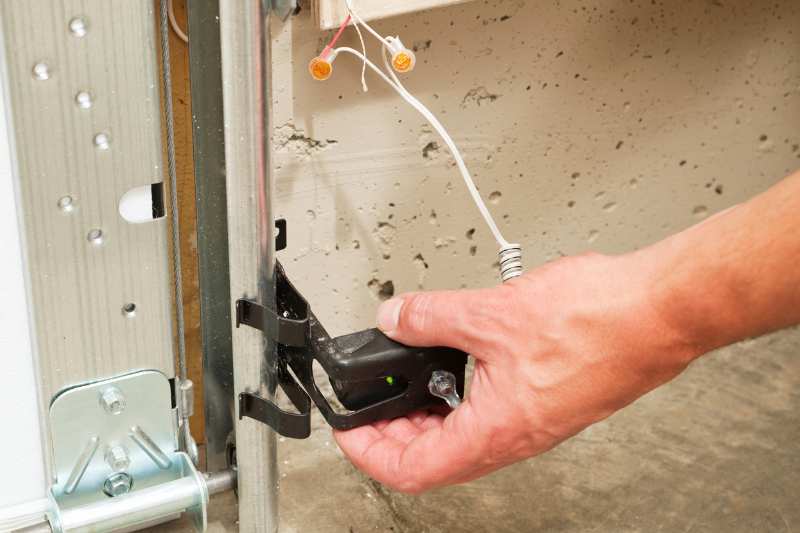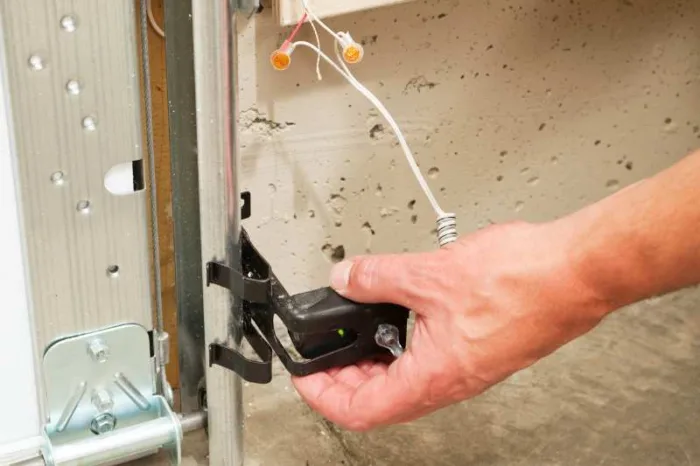Key takeaways
- Door contact sensor alarms tell you whether a door is open or closed.
- They work by notifying a central computer, which keeps a record and can issue instructions to other pieces of hardware.
- Install a door sensor by considering the two most common types: surface-mounted and recessed sensors.
- Use a door contact sensor to strengthen property security, create an entry delay system, or integrate it with other smart technology.

As a property manager looking to upgrade your apartment intercom system with a door release and provide the best experience for your residents, you might be curious about door contact sensors. What’s the most efficient way that you can use them?
In this post, we explain what a door contact sensor is and how it works. We then explain how to install them and some ways that they can benefit your property.
This post covers:
- What is a door contact sensor?
- How do door sensors work?
- How do you install a door contact sensor?
- 3 use cases for door contact sensors
What is a door contact sensor?
A door contact sensor is a sensor that lets you know if a particular door is open or not.
Whether managing a commercial or residential building, door sensors can help you centralize security data and further secure your property.
Door sensors need these parts to function:
- Sensor. The sensor itself has two states— open or closed.
- Control panel. A door sensor control panel serves as the “brains” of the entire system. You can use it to add and remove sensors or see which doors are open. You can also upgrade this panel or connect it to other electronic hardware to enable features like integrations and remote unlocking.
- Connection. Sensors can use either a wired connection or a wireless network, like WiFi or Bluetooth, to send information to the control panel. Wireless door sensors are easier to install but might not be as reliable as their wired counterparts.
Watch how ButterflyMX works:
Where is the best place to put a door sensor?
You should put a door sensor in a high-priority doorway where you’d like to emphasize security.
Place a door sensor on doors like:
- Exterior doors
- Fire doors
- Individual unit doors
- Doors to common areas
How do door sensors work?
Door contact sensors work by sending an electric signal to a central control panel, which tells the computer whether a certain door is open or not.
Old-school contact sensors install a physical button or plunger in a doorframe. When somebody closes the door, the door pushes the plunger inwards, and the sensor signals that the door is closed.
Newer models operate using the same principle but use two magnets installed on the door and the doorframe instead. When somebody opens a door with a magnetic door contact sensor, they push the two magnets out of each other’s range, and the sensor signals the door contact.
It’s important to know that contact sensors can only do one task — informing the system about a door’s status.
That’s why door contact sensors work best as a complement to smart access control systems that already can open doors electronically.
How do you install a door contact sensor?
Install a door contact sensor by fixing the two parts onto the door and the doorframe. Then, connect the sensor to a central control panel, either with copper wires or wirelessly.
Two common contact sensor installation methods include:
Surface-mounted
For a surface-mounted door contact sensor, you need to affix the two parts of the sensor to the door and the doorframe with screws or with an adhesive.
You can mount the sensor on the vertical side of your doorframe or place an overhead door contact sensor on top of it.
Recessed
A recessed sensor requires slightly more involved installation steps. However, recessed door contact sensors might be more aesthetically pleasing because they’re not in view after installation. They also tend to be sturdier because there’s a lower risk of regular wear and tear leading to the sensor simply falling off.
Install a recessed sensor by drilling correctly-sized holes into the door and doorframe. Then, insert the sensor and ensure it’s firmly ensconced into the recess.
3 use cases for door contact sensors
You can use door contacts to:
1. Strengthen property security
Contact sensors for doors can increase your property security by allowing you to create an electronic record of all door entry releases.
Properties that depend on pen-and-paper entry systems might fall prey to forged handwriting or guests simply forgetting to sign in. On the other hand, a sensor-based system can maintain perfect records.
2. Create an entry delay system
An entry delay system is the most efficient entry solution for properties with vestibules or lobbies.
This is because a property with a vestibule has two doorways: an exterior entrance and another security door deeper into the building. If a resident uses their intercom to let a guest in, you need to be sure both doors open — or else you risk that guest getting trapped in the vestibule.
By connecting both doors to door alarm contact sensors, you can keep access simple and convenient for your guests by ensuring both doors are open when needed.
3. Increase functionality in a smart home
You can connect a smart door contact sensor to other smart technology and increase your residents’ quality of life.
For example, you can program the thermostat to start aiming for a certain temperature or the apartment’s speakers to start playing music — and a resident wouldn’t have to lift a finger. They would have to walk through their front door.







